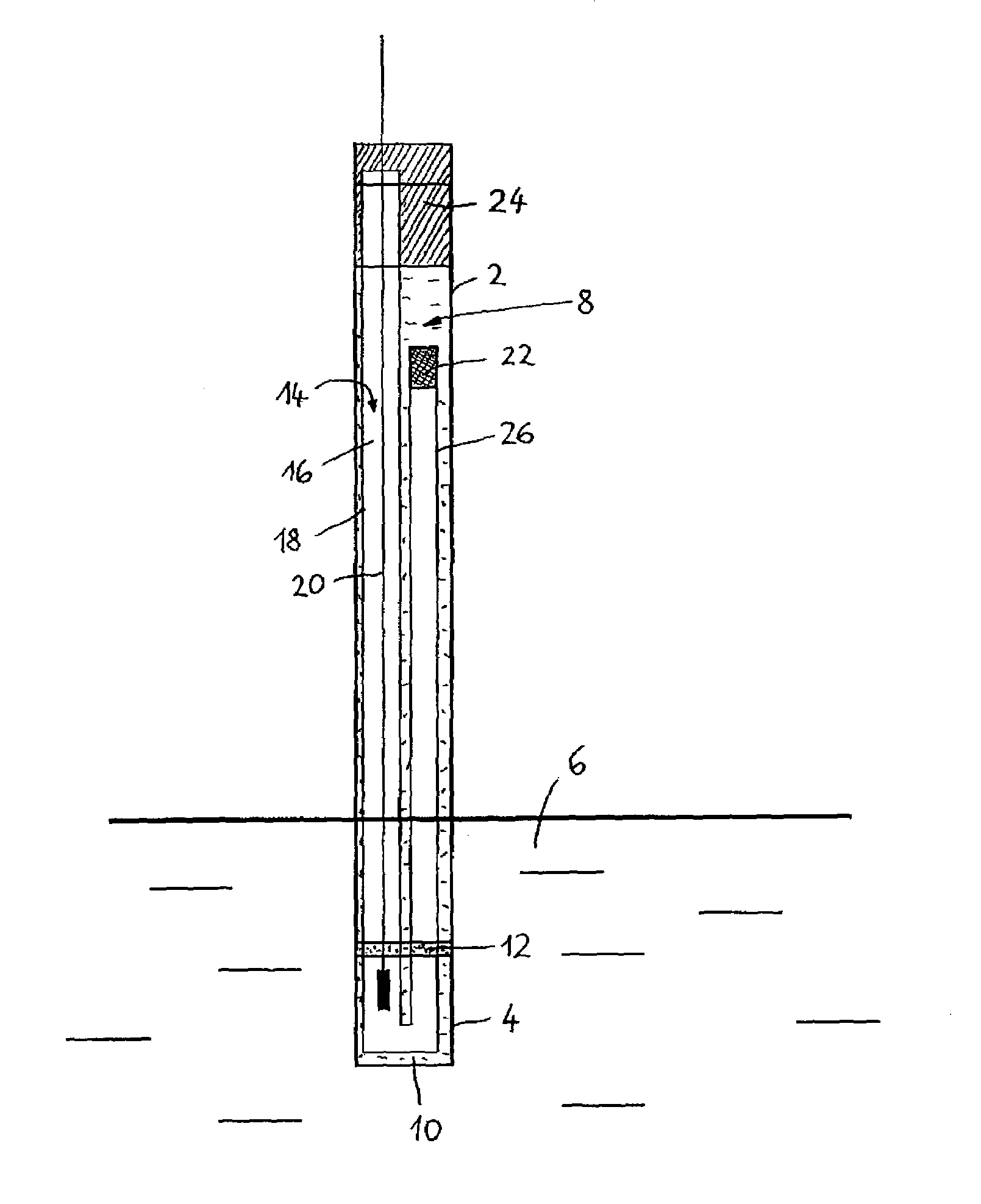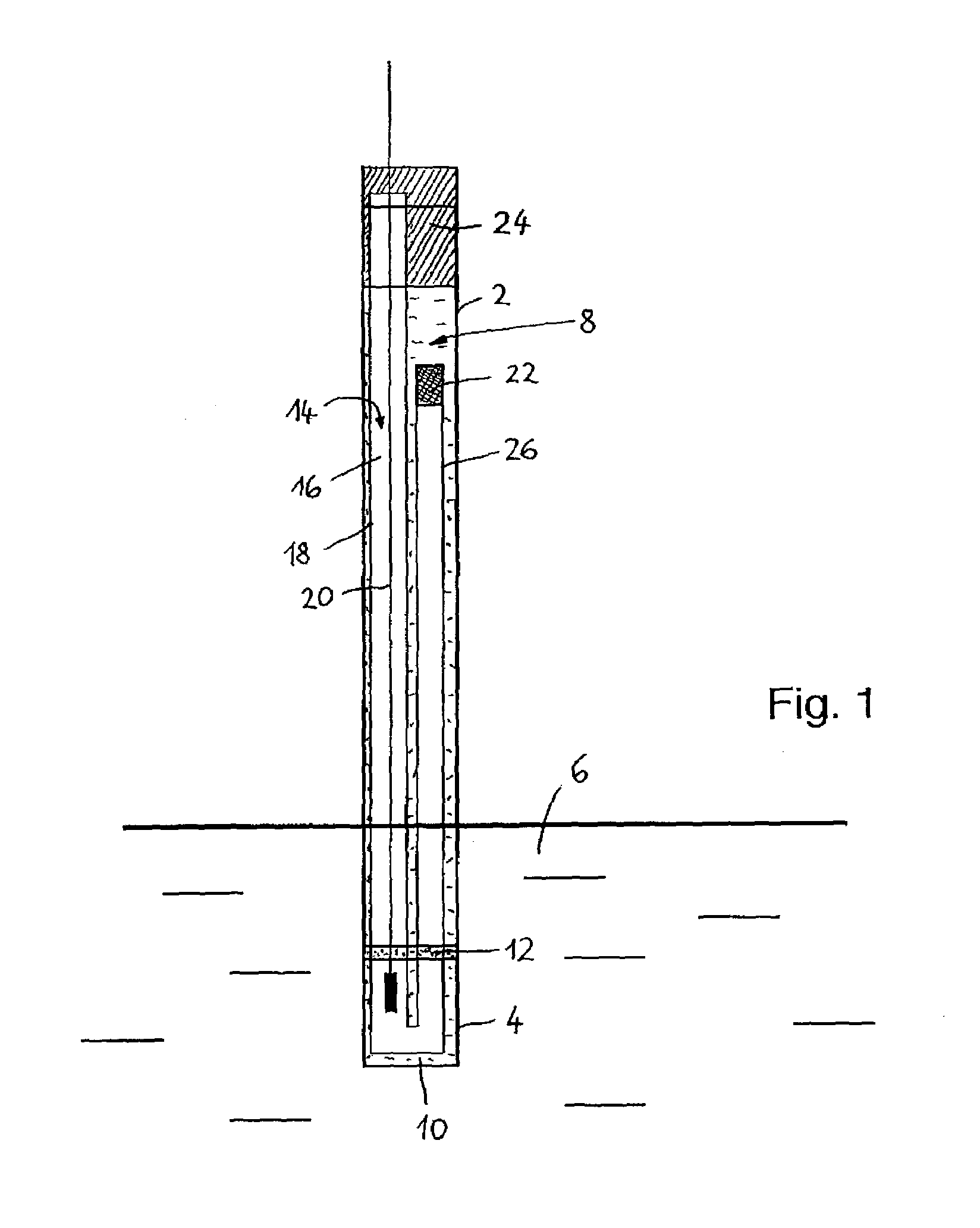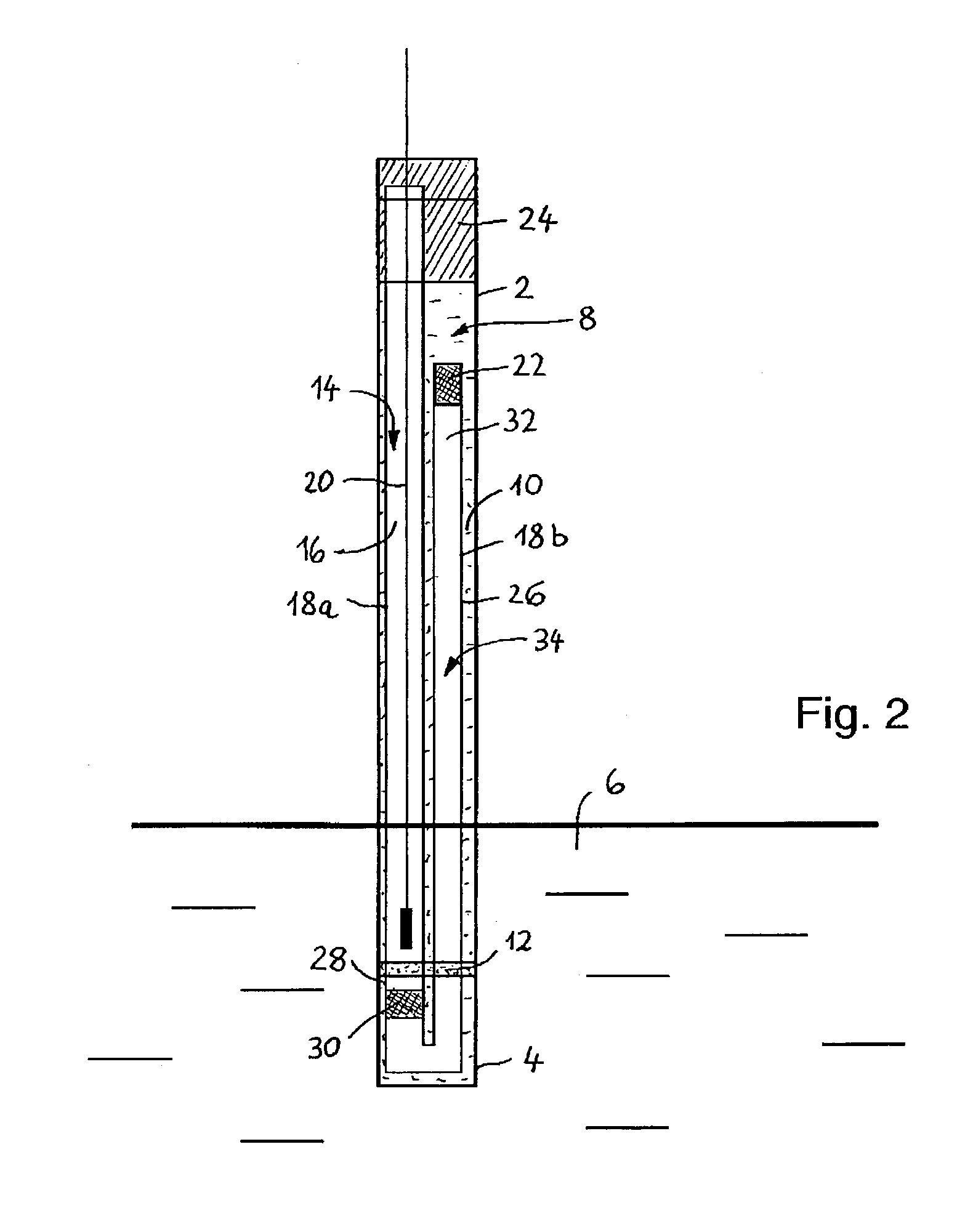Pressure-resistant reference electrode for electrochemical measurements
a reference electrode and electrochemical technology, applied in the direction of measuring devices, instruments, material analysis by electric/magnetic means, etc., can solve the problems of electrode poisoning, reference electrodes cannot be used anymore, and half cell potential is irreversibly interfered with, etc., to achieve better separation, delay contamination, and easy to prevent contamination
- Summary
- Abstract
- Description
- Claims
- Application Information
AI Technical Summary
Benefits of technology
Problems solved by technology
Method used
Image
Examples
Embodiment Construction
[0024]The reference electrode shown in FIG. 1 has a tubular housing 2, whose lower end 4, in the example shown, is dipped into a measurement medium 6. A primary current bridge 8 is formed by a primary electrolyte 10, contained in the housing 2, which is in electrochemical contact with the measurement medium 6 via a measurement junction 12 disposed on the lower end 4. Serving here as the measurement junction 12 is an annular porous diaphragm. The reference electrode also includes an electrochemical half cell 14, acting as a reference element, which includes a half-cell chamber 18, filled with a reference electrolyte 16, and a lead-off element 20 dipped into the reference electrolyte 16. In the example shown, the half cell 14 is embodied as an electrode of the second type, for instance as a silver / silver chloride electrode, in which the reference electrolyte 16 is saturated with AgCl. The half-cell chamber 18 has a primary junction 22, by which an electrochemical contact between the r...
PUM
| Property | Measurement | Unit |
|---|---|---|
| thickness | aaaaa | aaaaa |
| outer diameter | aaaaa | aaaaa |
| pressure | aaaaa | aaaaa |
Abstract
Description
Claims
Application Information
 Login to View More
Login to View More - R&D
- Intellectual Property
- Life Sciences
- Materials
- Tech Scout
- Unparalleled Data Quality
- Higher Quality Content
- 60% Fewer Hallucinations
Browse by: Latest US Patents, China's latest patents, Technical Efficacy Thesaurus, Application Domain, Technology Topic, Popular Technical Reports.
© 2025 PatSnap. All rights reserved.Legal|Privacy policy|Modern Slavery Act Transparency Statement|Sitemap|About US| Contact US: help@patsnap.com



